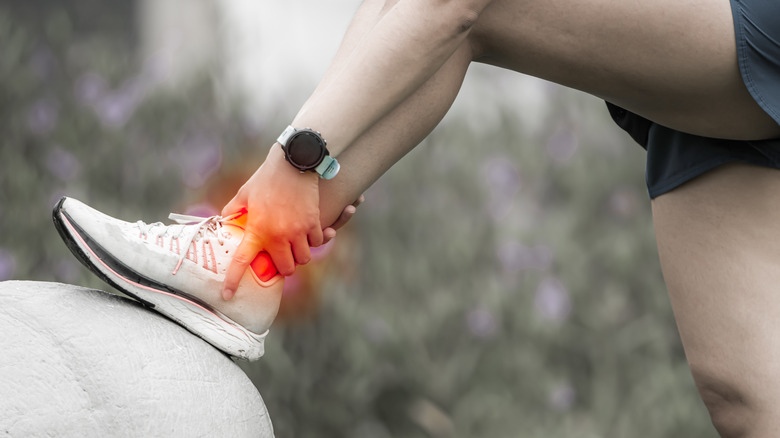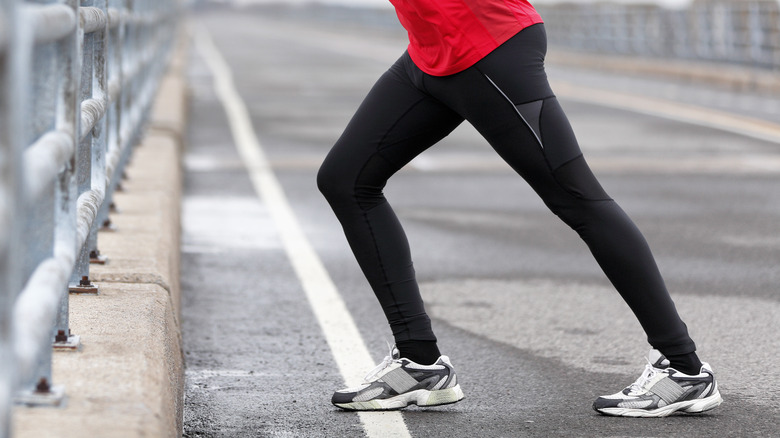What Does It Feel Like When You've Injured Your Achilles Tendon?
The Achilles tendon is named after the Greek hero because it's a strong, important tendon (via Silverman Ankle & Foot). Injuring your Achilles tendon can easily put a halt to your workouts. The two muscles in your calf power your ability to spring from your toes, and the Achilles tendon connects these two muscles to your heel (via Penn Medicine). Keep in mind, quickly increasing the intensity or duration of your workout could be straining your Achilles tendon (via American Academy of Orthopaedic Surgeons). When your calf muscles are tight, this adds excessive tension to the Achilles. Then, the small tears don't get a chance to heal, which can result in Achilles tendinitis.
According to Penn Medicine, an Achilles tendon injury will feel painful when you wake up or after walking or running. The tendon itself might feel swollen or warm, and you will feel pain if you touch it. It will also feel tender if you try standing on the toes of your injured heel. Achilles tendinitis is typically due to excessive use in younger people, but older adults might experience Achilles tendinitis through arthritis.
Treating and preventing an Achilles injury
If you suspect you might have injured or torn your Achilles tendon, your doctor might order an x-ray, ultrasound, or MRI to determine the nature of your injury (via Mayo Clinic). If the injury isn't severe, the doctor might suggest rest, ice, compression, and elevation (R.I.C.E.) to help with healing, as well as pain medication to reduce inflammation. A physical therapist could recommend exercises to help strengthen and stretch the area as it heals.
You'll want to be careful about stretching (per Exakt Health). Stretching with too much force or for too long can aggravate tendinitis because it compresses the Achilles tendon. If you feel pain in your Achilles while stretching, try foam rolling the calf muscles rather than stretching.
To prevent an Achilles injury, strengthen the calf muscles with calf raises, according to Rocky Mountain Foot and Ankle Center. If you're a runner, step up the intensity or duration of your program by only 10% each week. You should also keep track of the wear of your running shoes, and opt for trail or track running rather than running on concrete.


